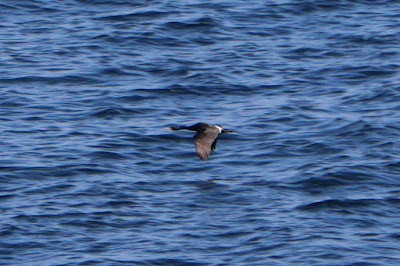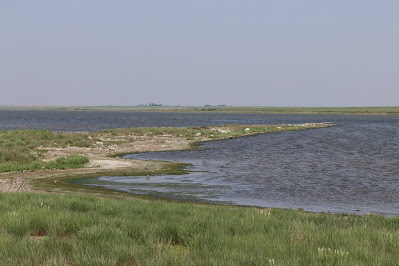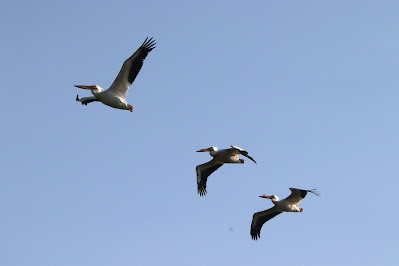Reed Lake, SK
According to a posted sign, The Chaplin-Old Wives-Reed Lakes complex is one of the most important inland sites for migratory birds in North America, with more than 30 species of shorebirds stopping or nesting here every summer. The large lake has an average depth of less than a metre allowing it to warm quickly in the spring. The warm temperatures combined with the lake's saline chemistry provides ideal conditions for explosive hatches of aquatic invertebrates which are prey for shorebirds.
The viewing tower was visible from the Trans Canada Highway.
Just prior to arriving at Reed Lake, the ground was covered in salt that creates the saline conditions mentioned above. One method of obtaining the salt (Sodium Sulphate) is to pump the water into smaller ponds and allow it to evaporate. Then the crystals can be gathered and harvested near a processing plant.
http://saskschoolsinfo.com/sask/na2so4.html
Many bird species could be viewed from the tower including American White Pelicans.
Redheads and Northern Shovelers showed high numbers in the skies.
I believe there are 38 Eared Grebes visible in this photo!
While standing on the viewing tower, I enjoyed watching a family of Columbia Ground Squirrels running and playing.
A sideroad allowed us to drive to another viewing point where we had some close looks at American Avocets!
We even had to wait for them to get off the road!

























































